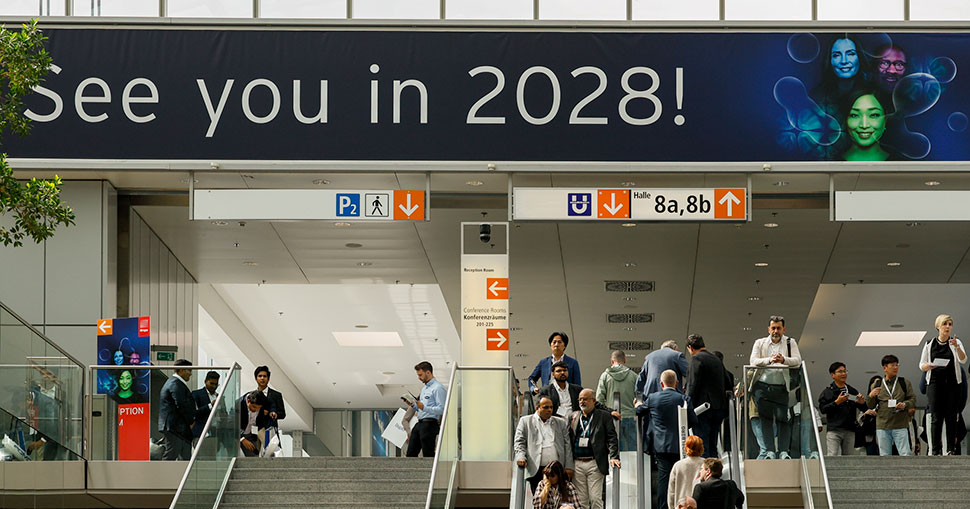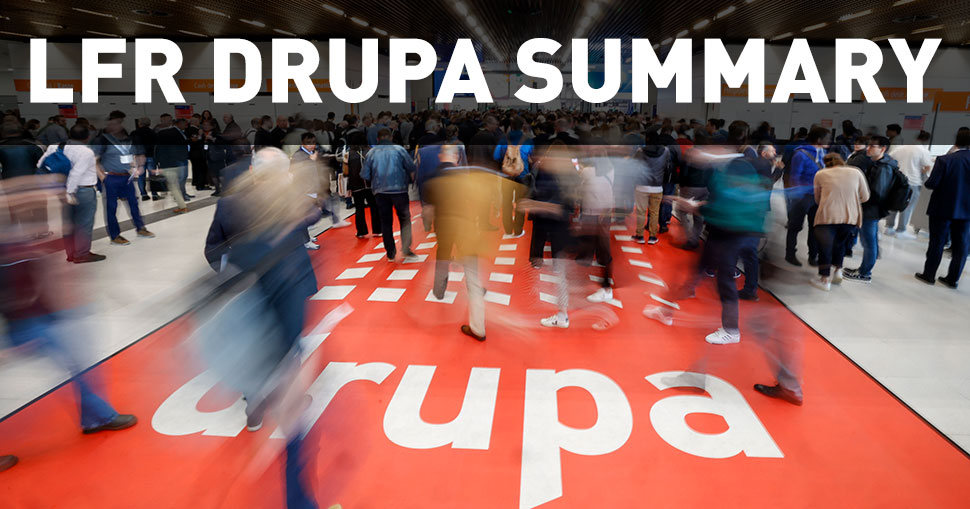At Drupa 2024, we experienced first-hand just how relevant and resilient this industry is.
“Das must-attend event der printindustrie”. Even for those that are not fluent in German – and a certain editor who only remembers bits and pieces after scraping a GCSE in the language almost 20 years ago – the phrase greeting visitors to the Drupa website is not hard to translate.
Some eight years after the last physical event, with the pandemic putting a stop to the show that was planned for 2020, Drupa returned in late May, with industry members descending on the West German town of Düsseldorf in their tens of thousands. Joining them were many of the largest brands from across the industry; from Heidelberg and HP to Kodak and Koenig & Bauer; there was plenty to explore across the halls.
Now that the dust has settled, it is time for the industry to reflect. Did Drupa deliver what we were hoping for? What were visitors able to take away from the event? And, perhaps most importantly, what does the future hold for das must-attend event?
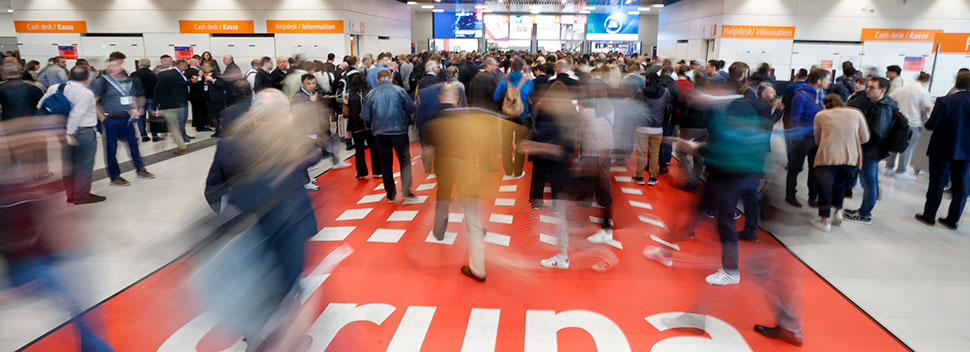
Visitor numbers down 53%
Starting with what everyone immediately looks for when an event closes its doors: visitor numbers. Organisers wasted little time in sharing these with the industry, publishing this data just a few days after the event concluded.
In total, 170,000 trade visitors attended Drupa 2024 between 28 May and 7 June. To put this into perspective, this is just under two full Wembley Stadiums of print professionals from all over the world across the two weeks.
While this number may seem impressive on first glance, it is some way behind the 260,000 visitors reported in 2016, a decline of around 90,000, or 53%. It also reflects a wider trend that we are seeing in the print industry with other events and exhibitions, both national and international, welcoming less people through the door.
Then there are exhibitor numbers. This year, Drupa welcomed some 1,643 exhibitors from 52 countries, whereas in 2016, 1,828 exhibitors attended from 54 countries. Of course, both exhibitor and visitor numbers have been affected by much wider issues – primarily the war in Ukraine – but that should not be enough alone to push these stats down.
However, make no mistake, Drupa is still one of the best attended exhibitions in the world. It is only overshadowed by automotive shows and book fairs, showing there is still very much an interest in print and finding out more about the latest technologies. The main issue here for organisers though is dealing with such a sharp drop and explaining this to the exhibitors that paid through the nose to be on the floorplan.
Breaking down the data after the show, organisers praised a “high level” of decision-making competence of visitors. They said around 96% of all visitors confirmed they had achieved the objectives associated with their visit.
“At Drupa 2024, we experienced first-hand just how relevant and resilient this industry is,” said Sabine Geldermann, Director for Drupa Portfolio Print Technologies. “The community is determined to set the course for the future together. Exchanging ideas with people from all continents and from all areas of the industry was extremely enriching and inspiring.
“We were able to welcome around 50 large delegations from various nations, and numerous globally active associations and organisations chose Drupa as the ideal setting for their conferences and board meetings.
“Together we are stronger. Many new strategic alliances concluded at the trade fair reflected the opportunities that are only possible in such a concentrated form at Drupa: meeting market players from other countries around the world in person, using core competences as synergy effects, forming networks and driving the market forward together.”
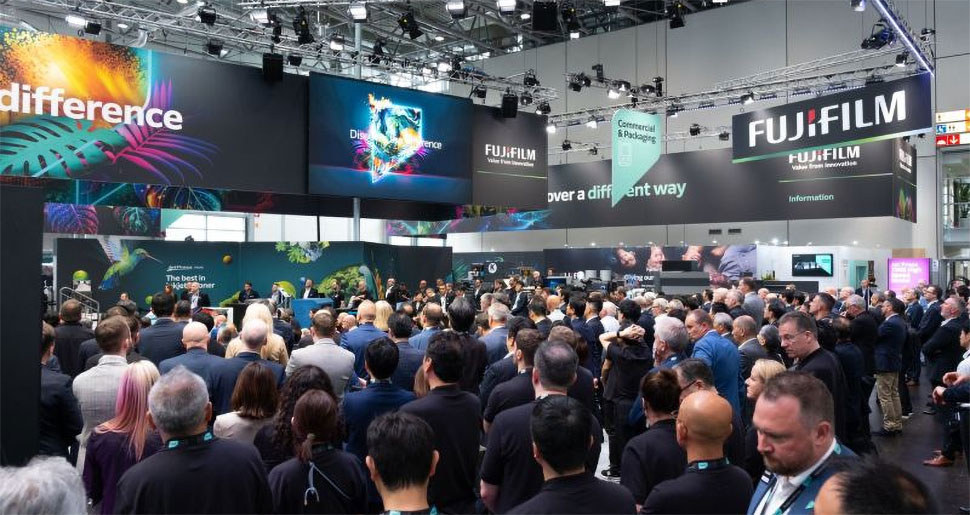
Is Drupa still a place to do business?
Of course, visitor and exhibitor numbers will only tell part of the story. Anyone who books a stand at an event will only really be interested in generating leads and actually doing deals and business on the show floor.
Traditionally, trade shows have been the place to do business. Decision makers would walk on to a stand, see the machine in action, and then sign on the dotted line, placing an order ready to take on the device at a later date.
Nowadays, thanks to something called the internet, many opt to do their shopping online after seeing the machine in action elsewhere, be it at an open house event or a smaller show. The internet has not quite made buying at trade shows obsolete, but it has had a major impact on the number of deals struck in-person.
That said, Drupa organisers are claiming a record number of deals were agreed on the show floor during the two weeks of this year’s exhibition. The claim was made in the same press release detailing the visitor and exhibitor numbers – perhaps to distract from the decline in footfall – but was not backed up with any real evidence.
Erhard Wienkamp, Managing Director at Messe Düsseldorf, spoke about a “high decision-making competence” of visitors throughout the show, saying this helped to ensure in-depth and well-founded technical discussions. He also noted “many direct investment decisions” and that exhibitors reported “large-volume purchase agreements.”
However, as for specific numbers to back up the “record deals” claim, there were done. This is not to say that business did not take place during the event. On the contrary, news has been filtering through of new investment, with several of the major manufacturers posting updates on machine sales.
To highlight just some deals, Halstan agreed to introduce the Canon ProStream 2133 continuous feed inkjet press, the Tecnau Revolution 50 AutoSetup sheeter and the Horizon BQ-500 ICE binder into its UK production site in Amersham. Meanwhile, Eco Flexibles, a sustainability-focused flexible packaging specialist, has signed on for a second Fujifilm Jet Press FP790 inkjet digital flexible packaging press.
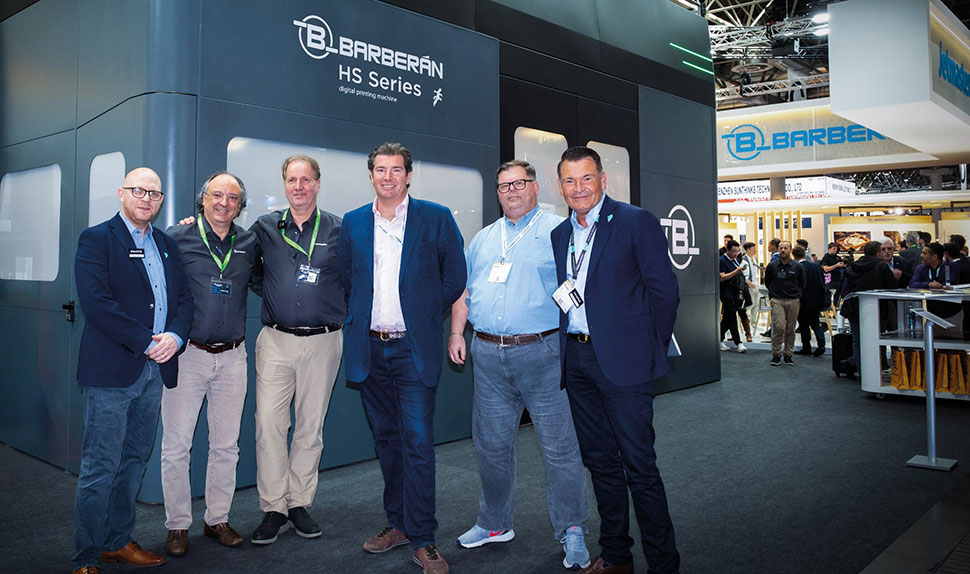
Linney, a full-service UK-based marketing agency, has become the first company in the world to invest in the new, ultra-high productivity, single-pass Barberán HS Series – developed in partnership by Fujifilm and Barberán. With speeds up to 6000 square meters an hour this digital printing beast measures over 40m in length. You may or may not get change from €5 million.
Further still, there is an apparent lasting appetite for 3D print with Massivit, a provider of industrial 3D printing systems, signing 15 new purchase orders for the sale of Massivit 3000 printers valued at $3m.
Help from across the pond
On the subject of striking deals and new alliances, Drupa formed one of its own this year, linking up with PRINTING United Expo in the US. Announced during the show, this will see the two events “make their events even more relevant and beneficial to both attendees and exhibitors in the ever-changing printing technology landscape”, according to the press release accompanying the announcement.
“PRINTING United Expo’s one-roof approach aligns very strongly with what Drupa has brought to the industry over the last seven decades,” Geldermann said. “Showcasing the many applications printing technology has these days, not only in the graphic arts field but in packaging, industrial and textile is what our attendees appreciate”.
PRINTING United Alliance CEO Ford Bowers added: “Together, we will be able to deliver even more opportunities for growth and collaboration to all who participate in the marketplace of events.”
The announcement took the industry by surprise, but seeing the two largest events in both Europe and the US form a partnership moving forward makes sense, given the decline in visitor and exhibitor numbers at Drupa 2024. As to whether this link-up will get more people through the door next time out, this remains to be seen – and we will be waiting a while with the Messe not due to welcome Drupa again until 2028.
Incidentally, this is not the first time we have seen events join forces. In years gone by, we have witnessed the FESPA Global Print Expo integrate the European Sign Expo to a decent level of success, while in the UK, Datateam, the company behind Printwear and Promotion LIVE! last year acquired Sign & Digital UK. However, the long-term effect of this is uncertain with mixed reports from this year’s event.
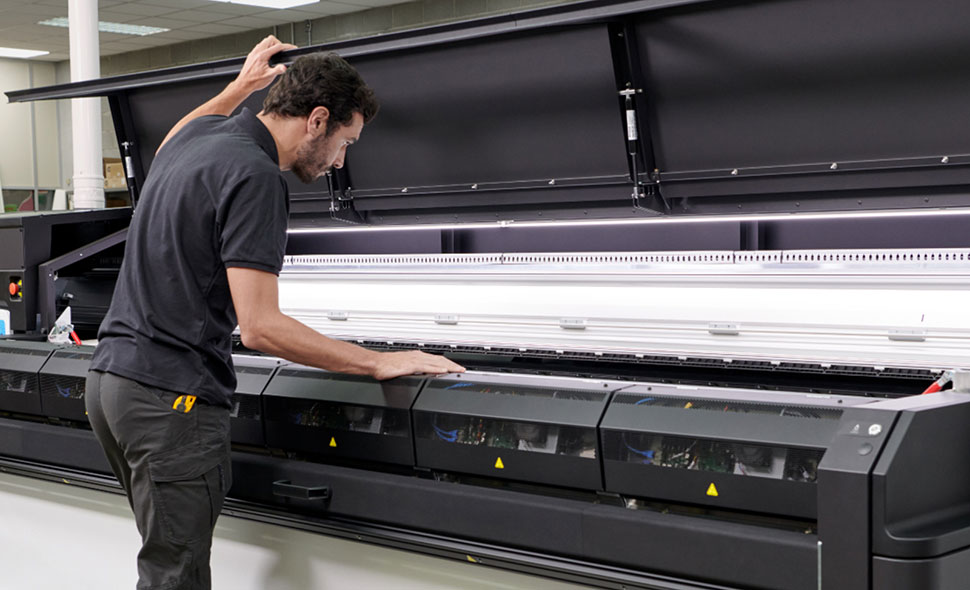
So, what’s new?
Of course, what mattered most to those in attendance was the technology and solutions on display. All manner of new machines were launched at the show, and listing them all would be some task, so we have picked out a few that caught our eye over the two weeks.
HP was one the leading manufacturers that used the show as a platform for new launches. These included a new 10L ink accessory for the HP Latex 2700 printer, as well as upgrades to Live Production, Design & eCommerce and Learn Premium, a first industry suite of software solutions for small and mid-volume print companies to expand into new online markets as well as manage their operations more effectively.
Focusing on the Introducing the high-capacity ink accessory, this modular and upgradeable solution, HP said, opens up opportunities for higher volume print businesses by addressing high running costs to the next level, reducing costs whilst simultaneously increasing productivity.
There is also a key sustainability component of this innovation in its compatibility with the HP Latex 2700. HP said this eliminates the need to discard or replace existing equipment, reducing waste, with users able to transition to higher volume printing capabilities without compromising on sustainability and incurring unnecessary costs.
Oscar Vidal, Global Director, Product and Strategy Large-Format Print at HP, said: “We recognise that print service providers face complex challenges, which is why we are continuing to evolve our large-format portfolio into the future.”
Also on display at Drupa 2024 was the new Acuity Triton from Fujifilm, which runs the water-based UV patented ink technology AQUAFUZE. The Acuity Triton hardware is manufactured in Japan by Mutoh, while Fujifilm developed the AQUAFUZE ink with the aim of providing a more planet friendly option for customers.
Fujifilm also previewed its third generation Acuity Ultra Hybrid Pro, offering a top speed of 600sq m/hr, with its 3.5 picolitre drop sizes is achieved with a double size carriage. It runs patented Fujifilm ink technology that adheres to a range media and is especially designed for rigid and roll substrates.
To support high volume production, the Acuity Ultra Hybrid Pro can be integrated with a new automation system, designed for the automatic handling of rigid materials. This allows for a single operator to run the machine for a full pallet-to-pallet process freeing up staff for other tasks.
Another new launch at Drupa was the VariJET 106 single pass press, which uses technology developed by Durst and Koenig & Bauer. Marketed as a “major digital development” within the folding carton market, the manufacturer ran live demonstrations of the device on each day of the show.
Planning for the future
The list of new launches goes on, with plenty of information about these to explore across the LFR website. So, as we begin to round up this review of Drupa 2024, it is perhaps a good idea to look at what manufacturers and suppliers have been doing to shore up their future.
We have already discussed Drupa linking up with PRINTING United Expo as part of its future planning, with several key exhibitors also announcing new partnerships. Among these were Canon and Heidelberg, with details coming to light in the hours leading up to the show of a new link-up.
The global sales and service co-operation in inkjet printing covers a joint focus on supporting commercial print businesses striving to establish hybrid offset/digital production to meet changing print buyer needs and increase capability to handle shorter runs of more diverse jobs.
With this, Heidelberg will expand its technology portfolio by introducing an inkjet product family based on the new Canon B2 sheetfed inkjet press and established B3 sheetfed inkjet press. Both presses are being integrated into the Heidelberg Prinect workflow, with service and Saphira Ink to be delivered through Heidelberg.
“Canon has channelled significant energy and investment to develop its leading inkjet technology and give customers in the commercial printing industry a clear vision of their future,” Canon President and CEO Akira Yoshida said.
“Heidelberg boasts a unique heritage, an extensive customer base and in-depth knowledge of the needs of commercial print businesses. We are confident that our collaboration with Heidelberg will accelerate the move to blended offset/digital production and enable transformative innovation for many more offset print businesses worldwide.”
Dr. David Schmedding, Head of Sales of Heidelberger Druckmaschinen, added: “We are confident that Canon is the ideal partner for Heidelberg to support our customers with best-in-class inkjet press technology, backed by deep expertise in digital applications and business development.
“Our aim is to offer print shops that operate sheetfed offset and digital presses simultaneously an attractive and integrated service and product portfolio. That’s why we’re excited to be able to offer our customers innovative industrial inkjet presses integrated in our Prinect workflow to gain flexible and cost-effective autonomous production.”
Sign of things to come?
These comments on a partnership heavily weighted towards digital technology, especially from a manufacturer that has built its reputation largely on offset printing, perhaps offers an insight into what future Drupa shows, and indeed the industry, will look like.
While there was plenty of technology on show across the 18 halls of the Messe, there was one thing that was very apparent – a reduced offset presence. In years gone by, visitors would struggle to hear each other over the constant noise of offset presses whirring away in the background. This time out, the halls were much quieter, with mainly digital printers – and of course the surprisingly catchy Drupa song – for company.
The shift to digital is something that we have seen become more apparent in recent years, with many of the leading players in this sector continuing to gain ground. There are many possible reasons for this, ranging from digital print being more sustainable than offset, to greater flexibility when it comes to short-run print.
Of course, offset still has its place with a fair amount of representation in Düsseldorf. It may be too early to say that the days of presses the size of buses dominating the halls of the Messe are numbered, but there was certainly a noticeable reduction of this tech this time out.
On the flip side, there is seemingly no slowing down the runaway train that is digital print in terms of new developments and solutions. Benny Landa’s aptly name Landa once again drew plenty of attention from visitors wowed by the advanced presses, while other heavy hitters from the more “traditional” digital print market also reported strong interest in their new kit.
While the makeup of future Drupa exhibitions remains to be seen, there is one thing that we can certainly take away from this year: optimism. Those outside the industry continue to make claims of print’s demise, but the fact is that development is as strong as ever, shown by the sheer array of new solutions on display across the Messe.
Yes, the industry may look different from last time out in 2016, and the days of Drupa taking in over 400,000 visitors may be long gone, but the fact remains: print is alive and well, and Drupa is testament to this.
To borrow the motto of a well-known German car manufacturer, vorsprung durch technik – advantage through technology.
